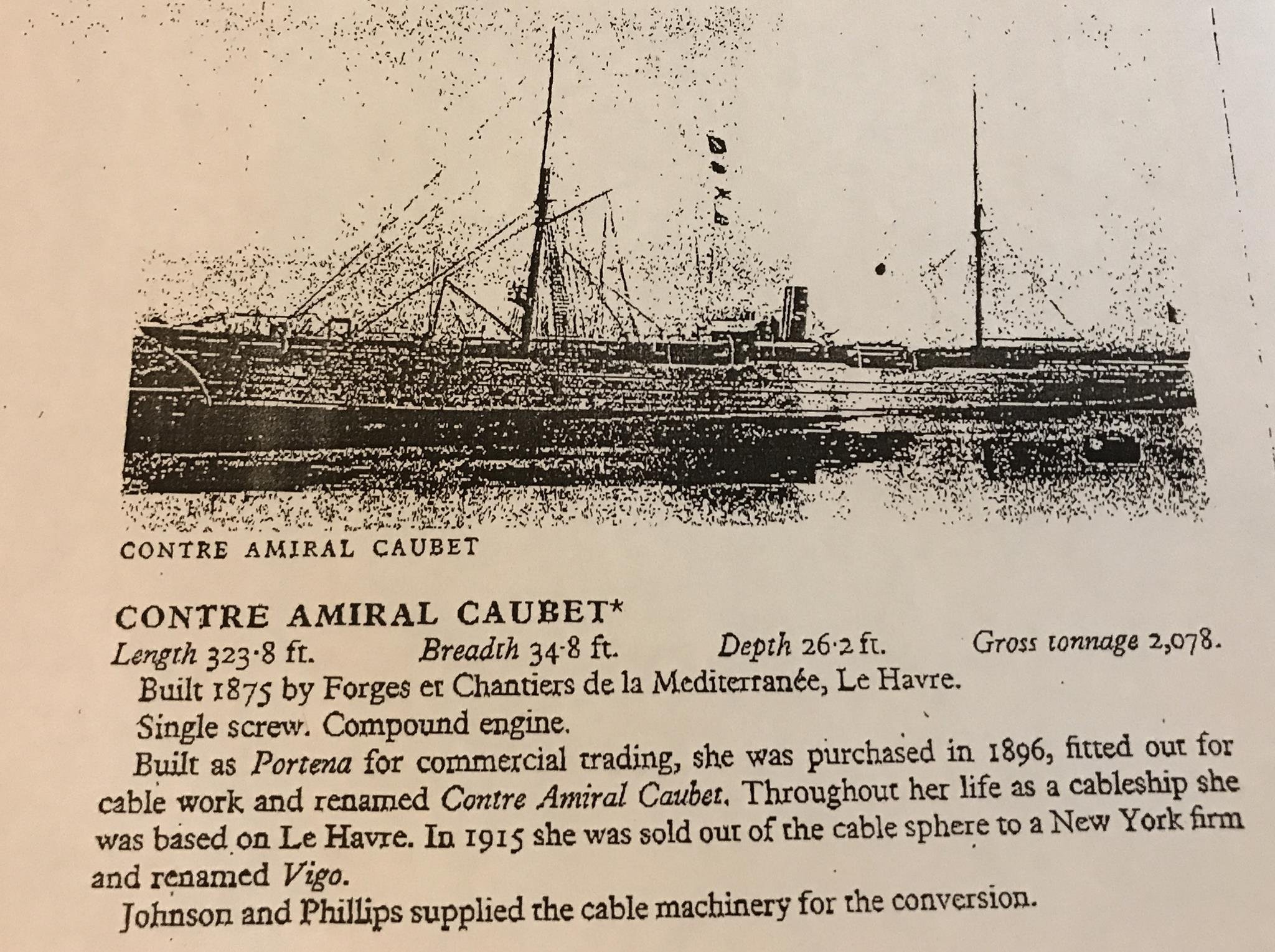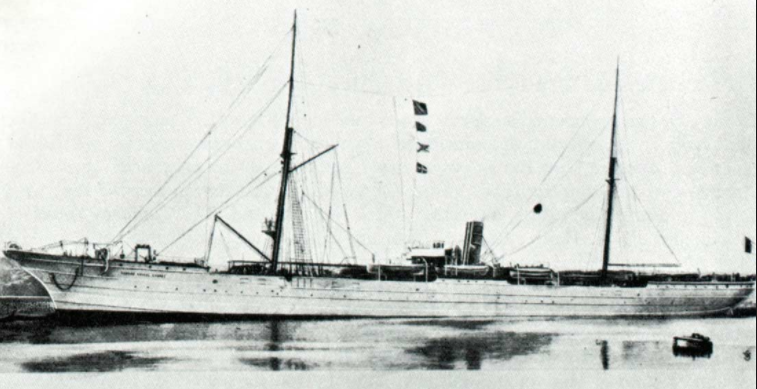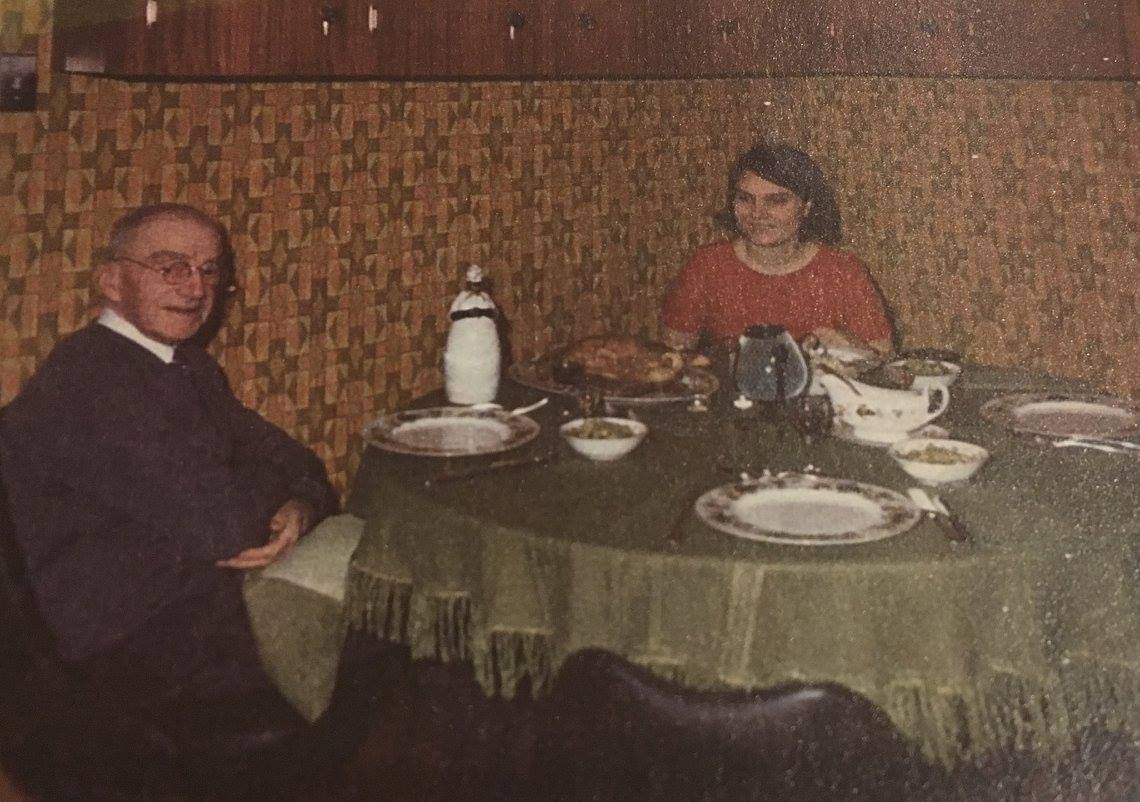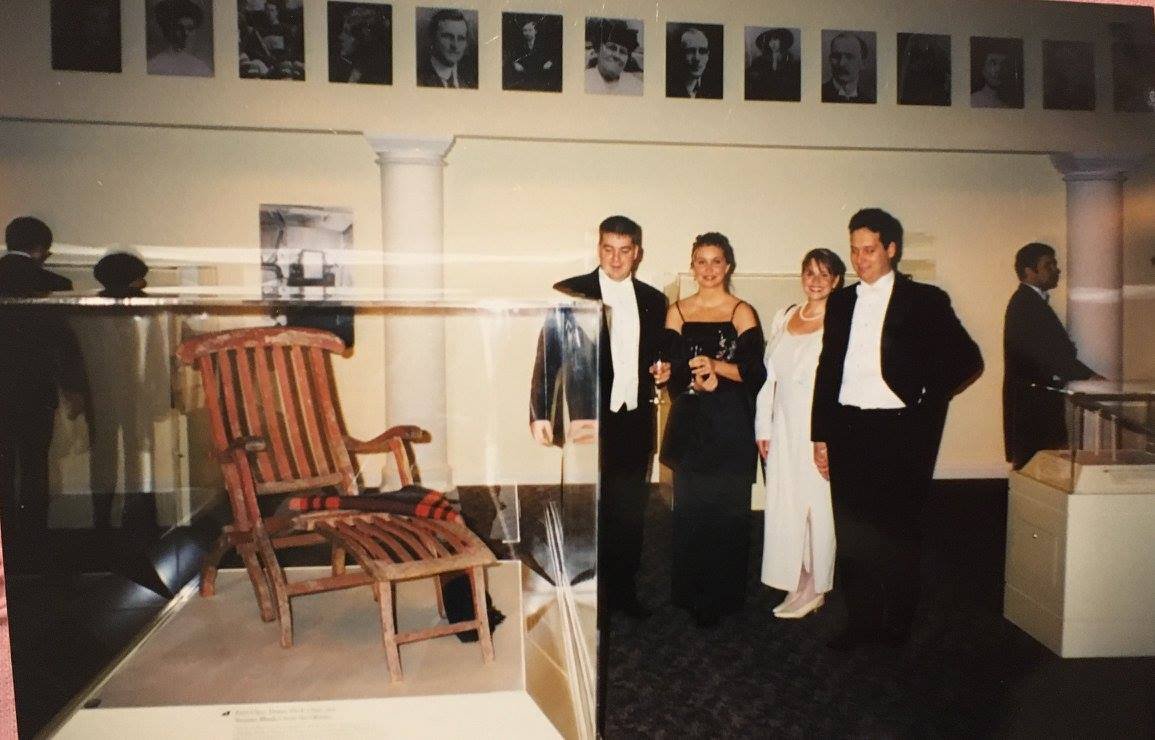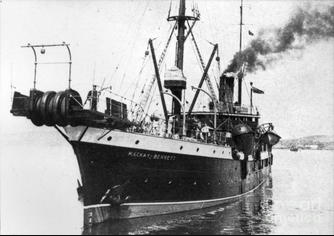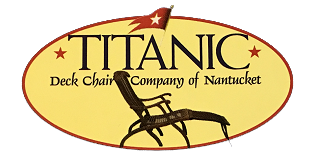The Hunt for Amazing Treasures - The Titanic Deck Chair
THE HUNT FOR AMAZING TREASURES (1995; 2003-2004) is a docuseries on the history channel that features searches for and appraisals of all sorts of treasures from around.
Watch the true story of a titanic deck chair, the captain who owned it, and the amazing journey 86 years later that uncovers the truth!
THE AUTHENTIC CHAIR
The Story
"Authentic Titanic Deck Chair Salvage And Recovery"
by Mary Miles, As originally posted in Yesterday’s Island
This is a strange, convoluted, wonderful story about how two men from Nantucket, who like to be referred to as "the chair guys," came upon, bought, researched, and hit the jackpot with an old salvaged deck chair with flaking reddish paint. It's a chair that was offered at Mark Enik's Island antique auction in August of last year. It's a chair that no one even bid on. So it sat at Enik's place gathering dust...until February of this year when Ian McCarthy and Ralph Cook bought it privately for $4000.
What's all the excitement now? Enik told auction-goers it was a deck chair from the Titanic. Of course today, there's hardly a soul worldwide who can't cite you a page full of the intimate particulars of this 1912 tragedy, and that, of course, is because of the huge success of the new Oscar-garnering movie. But until that came out, possibly the most people knew of that particular sea disaster was based on the song everyone sings as a child or a summer camper: Do the words "It was sad when the good ship went down" ring any bells for you?d
At what point did the bell ring in the chair guys' heads? They didn't attend the auction; in fact, they didn't even know Mark Enik had the chair until a friend, Danielle Miles, told them in February of this year. Things began happening when McCarthy saw the movie Titanic. He told his father about it, and his father said, "Ian, didn't you know that you have a relative who was on the Titanic?" Wow! Ian found that his great grandmother's first cousin from County Clare, Ireland, Mary Agatha Glynn, had been on board the Titanic, in steerage quarters, bound for Washington, DC. She escaped in Lifeboat #13; survived the shipwreck, and eventually married and settled in Washington, DC.
It was at about that time that Ian heard about Mark Enik's deck chair. The bell was going full tilt now, and Ian negotiated with Enik to buy the chair. Not having the funds readily accessible, he went to his buddy, Ralph Cook, for a short-term loan (the story goes that Ralph had money that was supposed to be used to complete his basement), and voila! Ian and Ralph became the chair guys. (One can only wonder if any of the auction attendees, having heard all the very recent publicity about the Titanic deck chair on Nantucket Island, vaguely remember it being offered...and are at this very moment kicking themselves for not bidding on it...)
The saga of the chair guys quickly becomes much more involved and interesting. Is the deck chair authentic or isn't it? Mark Enik bought it sometime in 1997 from a Captain Robin Lee of Halifax, Nova Scotia, who says he got it in about 1960 from Captain Julien Louis LeMarteleur, who commanded cable-repair ships early in the century for the Compagnie Francaise des Cables Telegraphiques. And the letter of provenance from Lee states that Captain LeMarteleur retrieved the deck chair and a piece of a cork life preserver from the icy waters near the site of the Titanic disaster. Passing ships observed many deck chairs in the water as the wreckage from the doomed ship continued to float away from the site of the tragedy in the cold currents. Furthermore, the ship's baker, Charles Joughin, testified that he threw at least 50 deck chairs into the water when he saw that there were not enough lifeboats, hoping to offer survivors something to cling to as the luxury liner sank.
But the chair guys wanted to know for sure if the account was true. Captain LeMarteleur has been dead for 25 years, so they couldn't ask him. The deck chair looks authentic: it's made of Burmese teak and some other kinds of tropical wood, and it has the five-point star insignia of the White Star Line carved in the front part of the headrest. And there's a brass nametag holder (minus the cardboard nametag that would possibly identify which first-class voyager on the Titanic had rented the chair, and who had sat out on deck to enjoy the sea breezes of early April in the company of other wealthy passengers). But how to prove that the chair guys' purchase is the real thing?
There is only one other known Titanic deck chair displayed anywhere in the world at this point. It's in the Maritime Museum of the Atlantic in Halifax, NS, and it was acquired from the son of a Rev. W. Cunningham, who was aboard the Minia, one of the cable ships sent out to recover bodies of Titanic victims.
Ian and Ralph knew the chair would be worth considerably more if they could prove it was from the Titanic. So off they went to Halifax, on March 24th of this year. There they visited the Public Archives of Nova Scotia and the Maritime Museum of the Atlantic; they also took a side trip to Mount Olivet Cemetery to look at and photograph the gravesites of many of the victims of the Titanic disaster (where Capt. LeMarteleur is buried also). They were fortunate to make contact with two Titanic researchers: Alan Ruffman, President of Geomarine Associates in Halifax, and Gary Shutlak, Senior Archivist at the Nova Scotia Public Archives. These two men have been very interested, say the chair guys, and invaluable in helping to verify the deck chair's authenticity. Ian and Ralph also met and queried Margaret Pennington, who was Capt. LeMarteleur's housekeeper and to whom he left the piece of the cork life preserver. She was quite sure the deck chair in question was the real thing and signed a provenance of her own attesting to the authenticity of the deck chair recovered by the man she once took care of.
The two men had found out a lot, but not enough. A month later they returned to Halifax, where they spent time looking at the Lloyd's Registers hoping to find out more about Capt. LeMarteleur. LeMarteleur was commanding a ship, the Contre Amiral Caubet, but it was listed as being in port in the Halifax papers during the Titanic period. The two men concluded that what they needed were ship's logs, to sort all this out for sure. To do this, they needed to go to Paris. They needed to get into the records of Compagnie Francaise des Cables Telegraphiques and find the Contre Amiral Caubet's log!
Asked what the low point had been in their frantic search to authenticate their deck chair, the chair guys unhesitatingly said (1) when they'd found that Capt. LeMarteleur's ship, the Contre Amiral Caubet, had been in port, raising the question of how he could have recovered a deck chair from the water near the Titanic's scene, and (2) when they arrived in Paris and found everything closed for the first three days. "We had planned to spend five days looking for the logs, but now we'd only have two!" said Ian. ( Ralph said: "When we went there we found a big gate, a guard, and it was obvious there was high security there. And they said they absolutely wouldn't let us in. Only professors or professional researchers were allowed inside to look at records. We were so discouraged; we asked ourselves why we'd come, why we'd spent all this money..." The chair guys say that they've spent almost $15,000 so far trying to find proof that their deck chair is really from the Titanic.) Ralph continued: "Then we saw three people talking French, and I walked up to them and said, 'Hello, we need help.' 'We're from America and doing research on the Titanic..." and so forth-all in English-and they said Oui, Oui, and started talking fast in French to one another. We didn't know if they were ignoring us, laughing at us, or what.
"Then two of the guys left, but the third one, Daniel Catan, asked to see our documents, which we'd left in the hotel. He walked back there with us, looked at the papers, and asked us to meet him at his house on Monday morning. He turned out to be a researcher himself, and he knew how to get us into France Telecom." The long and short of it is that finally, the chair guys got into the impressive and closely guarded records room and found the books in which they hoped to get their proof. But they couldn't read French, could they? (Ralph laughed and said, "Ian was learning French in one day!") Ah, but they knew to look for the Captain's name and the relevant dates and the word Titanic. And they found the date they were looking for, they were referred to a particular box of information which, they were told, required permission to access, and was quite a distance away. Frantic, the chair guys pressed on, found that the box in question was not too far away after all, and the fellow who would have been able to get them the box was busy. "But we'll go with you-we'll carry the box-we need it right away!" He must have seen the desperation in the chair guys because he took them down the street and they found the box they wanted. Breakthrough!
"For the next day," said Ian, "were part of the Telecom family...everyone was excited now. We were about to look at the information that hadn't been touched for 86 years! And it was about the Titanic." And finally, the breakthrough! They found the company repair records proving that Capt. LeMarteleur had not been on his own ship, which had indeed been in - port for the whole time, but had been on the Mackay-Bennett, as client representative of Compagnie Francaise des Cables Telegraphiques, who were renting the vessel. And here's the proof they were looking for: the ship, the Mackay-Bennett, was ordered to repair a broken French telegraph cable on the same voyage as the recovery of Titanic
victims . . . hence LeMarteleur's presence as a client representative. The voyage became so physically and emotionally draining that the repair was postponed for a voyage in May and LeMarteleur gained a chair and a piece of a cork life preserver for his troubles.
Did the chair guys ever almost give up hope that they'd find what they were looking for? Ralph said, "It's really amazing what happened to us in France. To find the logs the way we did is just unbelievable!"
What are the chair guys' plans now...what will they do with the Titanic deck chair?
(For a consideration of the historical evidence indicating the Chair's authenticity, see Provenance.)
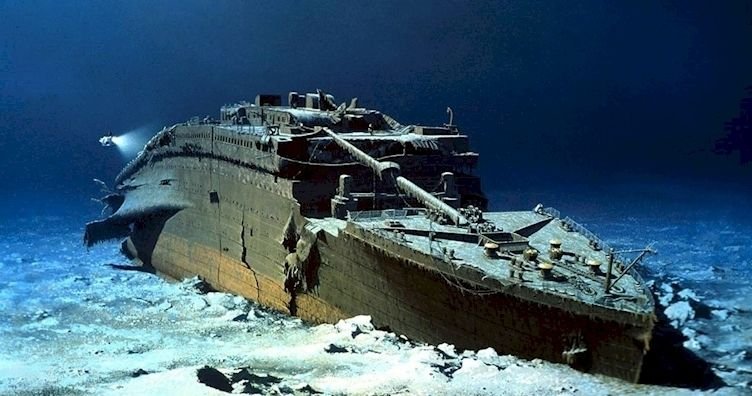
View Our Story With The History Channel HERE.
